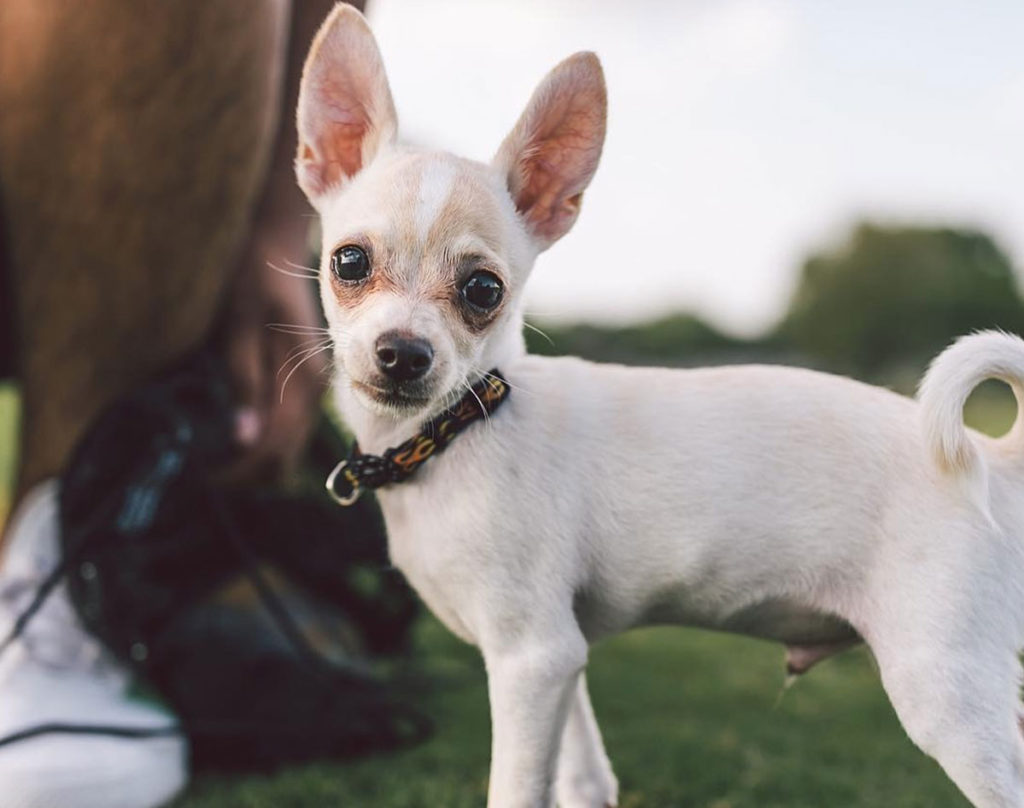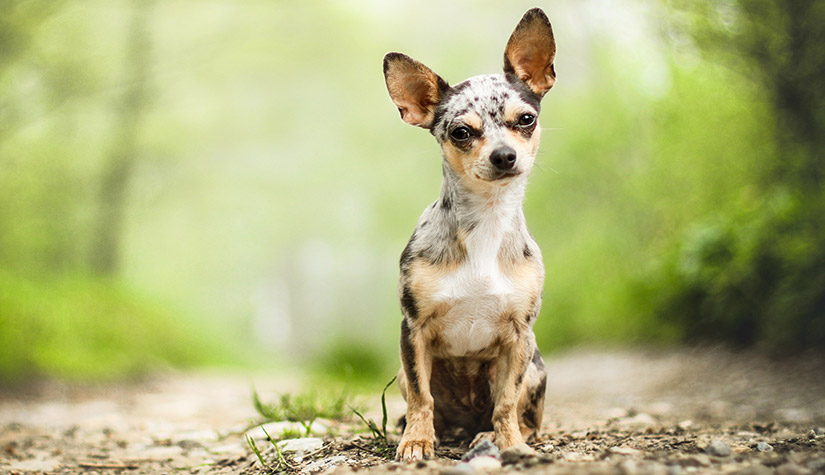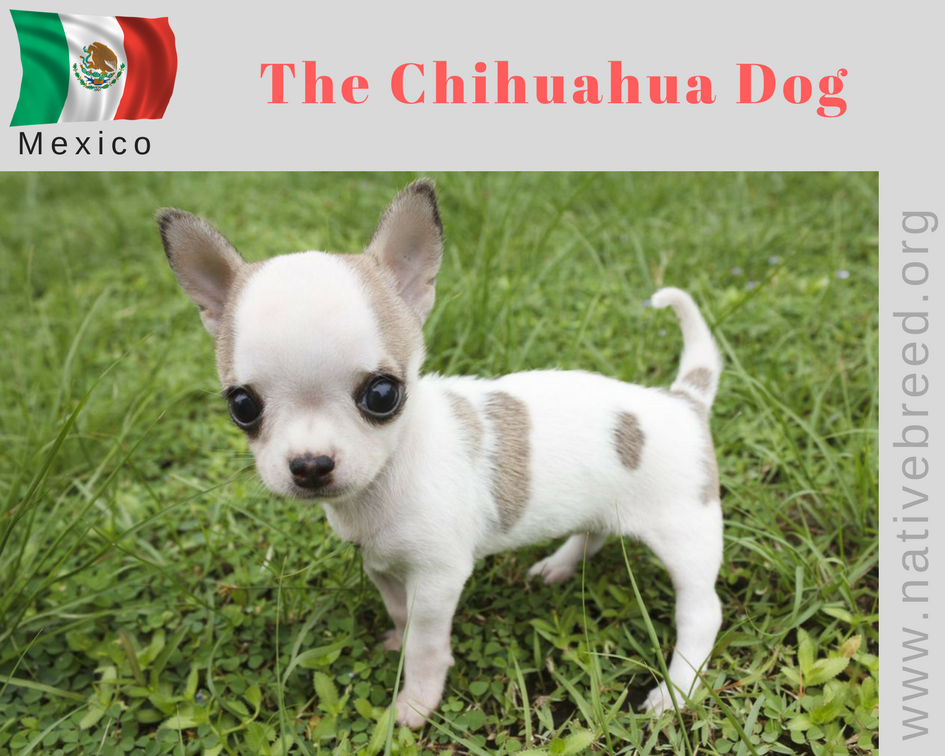History
The Chihuahua’s history is convoluted, and many theories surround the origin of the breed. Both folklore and archaeological finds show that the breed has origins in Mexico. The most common theory is that Chihuahua is descended from the Techichi, a companion dog favored by the Toltec civilization in Mexico. No records of the Techichi are available before the 9th century, although dog pots from Colima, Mexico, buried as part of the western Mexico shaft tomb tradition, which date back to 300 BC, are thought to depict Techichis.

The earlier ancestors probably were present before the Mayas as dogs approximating the Chihuahua are found in materials from the Great Pyramid of Cholula, antedating 1530 and in the ruins of Chichen Itza on the Yucatán Peninsula. However, a genetic study indicated that there was less than 2 percent pre-European mitochondrial DNA in modern Chihuahuas due to admixture with the European dogs.
Wheeled dog toys in Mesoamerica depicting both “apple” and “deer” headed chihuahuas range from Mexico to El Salvador. The earliest of these were found at Tres Zapotes in Veracruz, Mexico, which dates to 100 AD, indirect evidence that a Chihuahua-style breed was in Mexico over 1400 years before the first Europeans arrived.
Dog effigy pots dating to around 1325 AD discovered in Georgia and Tennessee also appear to represent the Chihuahua. In 1850, a pot featuring the Chihuahua-style dogs was unearthed in old ruins at Casas Grandes in the Mexican state of Chihuahua, which dates from 1100–1300 AD showing the long history of such dogs at this site, although most artifacts relating to its existence are found around Mexico City. It has been argued that these pots arrived with survivors from the Casas Grandes site in Chihuahua, Mexico, after it was attacked and destroyed around 1340 AD.
In a 1520 letter, Hernan Cortés wrote that the Aztecs raised and sold the little dogs as food. Colonial records refer to small, nearly hairless dogs at the beginning of the 19th century, one of which claims 16th-century Conquistadores found them plentiful in the region later known as Chihuahua. Small dogs such as Chihuahuas were also used as living heating pads during illness or injury. Some believe this practice is where the idea of pain being transferred to animals from humans originated, which gave way to rituals such as burning the deceased with live dogs, such as the Techichi, to exonerate the deceased human’s sins.Chihuahuas as we know them today remained a rarity until the early 20th century.
Appearance

Chihuahuas are the smallest breed recognised by some kennel clubs.
There are two varieties of Chihuahua, the Smooth Coat (smooth-haired) and the Long Coat (long-haired).
Both the Smooth and the Long Coats have their special attractions and are equally easy to keep clean and well-groomed. The term smooth coat does not mean that the hair is necessarily smooth, as the hair can range from having a velvet touch to a whiskery feel. Longhaired Chihuahuas are smoother to the touch, having soft, fine guard hairs and a downy undercoat, which gives them their fluffy appearance. Unlike many longhaired breeds, longhaired Chihuahuas require no trimming and minimal grooming. Contrary to popular belief, the longhaired breed also typically sheds less than its shorthaired counterparts. Up to three or more years may be needed before a full longhaired coat develops.
Chihuahuas have large, round eyes and large, erect ears, set in a high, dramatically rounded skull. The stop is well defined, forming a near 90 degree angle where the muzzle meets the skull.
Breed standards for this dog do not generally specify a height; only a weight and a description of their overall proportions. Generally, the height ranges between 15 and 23 cm. however, some dogs grow as tall as 30 to 38 cm. Both British and American breed standards state that a Chihuahua must not weigh more than 2.7 kg for conformation. However, the British standard also states that a weight of 1.8–2.7 kg is preferred. A clause stating. “if two dogs are equally good in type, the more diminutive one is preferred” was removed in 2009.
Pet Chihuahuas (that is, those bred or purchased as companions rather than show dogs) often range above these weights, even above 10 lb if they have large bone structures or are allowed to become overweight. This does not mean that they are not purebred Chihuahuas; they just do not meet the requirements to enter a conformation show. Oversized Chihuahuas are seen in some of the best, and worst, bloodlines. Chihuahuas do not breed true for size, and puppies from the same litter can mature in drastically different sizes from one another. Also, larger breeding females are less likely to experience dystocia (obstructed labour). Many breeders try to breed Chihuahuas as small as possible, because those marketed as “teacup” or “tiny teacup” command higher prices.
Chihuahuas occur in virtually any color combination, from solid to marked or splashed, allowing for colors from solid black to solid white, spotted, sabled, or a variety of other colors and patterns. Colors and patterns can combine and affect each other, resulting in a very high degree of variation. Common colors are fawn, red, cream, chocolate, brown, mixed, white, and black. No color or pattern is considered more valuable than another.
The merle coat pattern, which appears mottled, is not traditionally considered part of the breed standard. In May 2007, The Kennel Club decided not to register puppies with this coloration due to the health risks associated with the responsible gene, and in December of that year, formally amended its breed standard to disqualify merle dogs. The FCI, which represents the major kennel clubs of 84 countries, also disqualified merle. Other countries’ kennel clubs, including Canada, Australia, New Zealand, and Germany, have also disqualified merle. However, in May 2008, the Chihuahua Club of America voted that merles would not be disqualified in the United States, and would be fully registrable and able to compete in AKC events. Opponents of merle recognition suspect the coloration came about by modern crossbreeding with other dogs and not by natural genetic drift.
